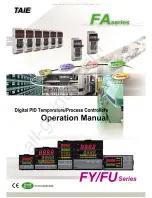
XC2200 Derivatives
System Units (Vol. 1 of 2)
Memory Organization
User’s Manual
3-18
V2.1, 2008-08
MemoryX2K, V1.3
3.9
Embedded Flash Memory
This chapter describes the embedded flash memory of the XC2200:
•
defines the flash specific nomenclature and the structure of the flash
memory.
•
describes the operating modes.
•
contains all operations.
•
gives the details of operating sequences.
•
The three sections
look more into
depth of maintaining data integrity and protection issues.
•
discusses Flash EEPROM emulation.
•
describes interrupt generation by the flash memory.
The
describes how the flash memory is embedded into the memory
architecture of the XC2200 and lists all SFRs that affect its behavior.
3.9.1
Definitions
This section defines the nomenclature and some abbreviations as a base for the rest of
the document. The used flash memory is a non-volatile memory (“
NVM
”) based on a
floating gate one-transistor cell. It is called “non-volatile” because the memory content is
kept when the memory power supply is shut off.
Logical and Physical States
Flash memory content can not be changed directly as in SRAMs. Changing data is a
complicated process with a typically much longer duration than reading.
•
Erasing
: The erased state of a cell is logical 0. Forcing an flash cell to this state is
called “erasing”. Erasing is possible with a minimum granularity of one page (see
below). A device is delivered with completely erased flash memory.
•
Programming
: The programmed state of a cell is logical 1. Changing an erased cell
to this state is called “programming”. A page must only be programmed once and has
to be erased before it can be programmed again.
The above listed processes have certain limitations:
•
Retention
: This is the time during which the data of a flash cell can be read reliably.
The retention time is a statistical figure that depends on the operating conditions of
the flash array (temperature profile) and the accesses to the flash array. With an
increasing number of program/erase cycles (see endurance) the retention is lowered.
Drain and gate disturbs decrease data retention as well.
•
Endurance
: As described above the data retention is reduced with an increasing
number of program/erase cycles. A flash cell incurs one cycle whenever its page or
sector is erased. This number is called “endurance”. As said for the retention it is a
statistical figure that depends on operating conditions and the use of the flash cells
and not to forget on the required quality level.
















































